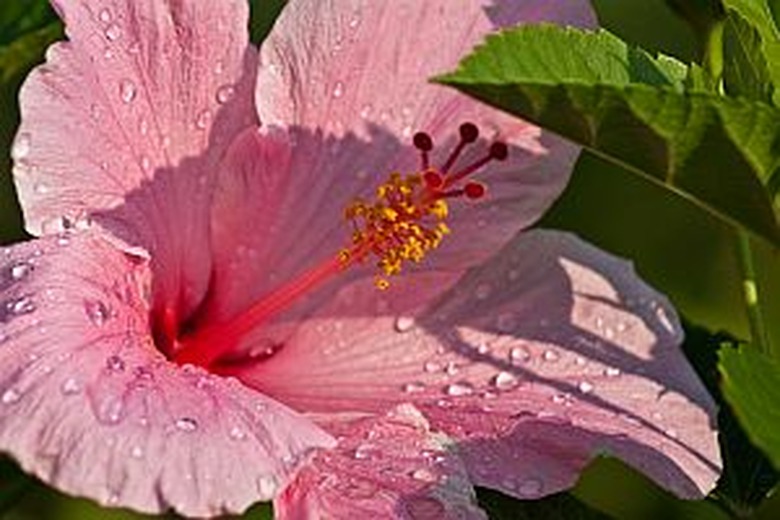How To Winterize Hibiscus
Things Needed
- Hibiscus plants
- Garden shears
- 12-inch container
- Hose
- Mulch
- Fluorescent lights
- Spray mister filled with water
- Shallow dish
- Gravel
Tip
Select a medium-size container for the tropical hibiscus. If you like the look of tropical hibiscus growing in the ground, but you live in zones that are colder than Zone 9, dig holes for the planting containers and set the containers into the ground so the tops of the containers are even with the soil level. Simply lift the containers out of these holes to bring the tropical hibiscus plants inside in the winter.
Warning
Some tropical hibiscus plants perform well after wintering indoors, but some do not bloom as well during subsequent growing seasons.
Hibiscus is a lovely flower with a bloom like a large paper blossom. How you winterize hibiscus depends upon your growing location and the type of hibiscus flower you grow. Hardy hibiscus has blossoms as large as 8 inches in diameter and has dull, green leaves. This hibiscus is hardy to USDA Zone 5 with minimal winter protection. Tropical hibiscus has smaller blossoms with glossy, green leaves and is hardy only to USDA Zone 9. If you live in colder climates, grow tropical hibiscus in containers and keep the containers outdoors in the summer and indoors in the winter. Determine which hibiscus plant you have and then winterize accordingly.
- Hibiscus is a lovely flower with a bloom like a large paper blossom.
- Tropical hibiscus has smaller blossoms with glossy, green leaves and is hardy only to USDA Zone 9.
Winterize a Hardy Hibiscus
Step 1
Cut off the wilted foliage of the hardy hibiscus that is growing in the outdoor soil. Cut the foliage down to the soil line.
Step 2
Cover the roots with a light layer of mulch, if desired, but this is not necessary. Use straw, shredded bark or shredded leaves to mulch the hardy hibiscus roots.
Step 3
Remove the mulch in the spring when the overnight outdoor temperature stays above 45 degrees Fahrenheit.
Winterize Tropical Hibiscus
Step 1
Remove the containers with the tropical hibiscus from the summer growing location before overnight temperatures fall to 45 degrees Fahrenheit. Clean off the outside of the containers, if necessary.
- Cut off the wilted foliage of the hardy hibiscus that is growing in the outdoor soil.
Step 2
Trim the main stem of the hibiscus plant back so that it remains only approximately 5 inches high. This will remove any insects living on the foliage and will clean up the plants to remove old and decaying leaves.
Step 3
Direct a strong spray of water with the hose over the remaining foliage to clean off any remaining pests. Allow the plants to dry completely before bringing them inside.
Step 4
Place the hibiscus plants in a cool location (such as a basement) and provide artificial light over the winter. Use a simple fluorescent light and hang it approximately 5 feet over the plants. Keep the light on for at least 16 hours every day.
- Trim the main stem of the hibiscus plant back so that it remains only approximately 5 inches high.
- Use a simple fluorescent light and hang it approximately 5 feet over the plants.
Step 5
Expect leaves to yellow and drop after you bring the plants inside. This is part of the dormancy period and the plants will grow new foliage the next growing season.
Step 6
Allow the potting soil to dry completely between watering. Saturate the soil and then allow it to dry out completely again. If your indoor environment is especially dry, use a spray mister to lightly mist the leaves every day. Another way to add humidity to the air is to fill shallow dishes with gravel and add water to the dishes to cover the gravel. Place the hibiscus containers on the gravel dishes and replenish the water in the dishes as it evaporates. This will add humidity to the air around the hibiscus plants.
- Expect leaves to yellow and drop after you bring the plants inside.
- This will add humidity to the air around the hibiscus plants.
